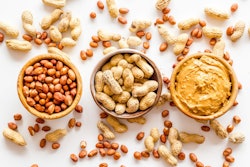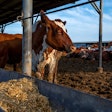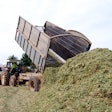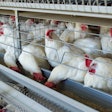
Known as a prized ingredient for layer hens, flaxseed can also be used in dairy cows.
We are all used to considering flaxseed (or linseed) as an ingredient for layer feeds, especially those producing omega-3-enriched eggs.
As it is well known, omega-3 fatty acids are a big ticket item in modern human nutrition circles. In past times, however, flaxseed (as reported in older books) was used quite extensively in diets for all farm animals, being the primary “oil meal.” Of course, it was almost always about the byproduct of oil extraction from flaxseed, which is still available, but today the interest is more on whole seeds that contain the full complement of oil (more than 40%) of which about 50% is the all-important omega-3 fatty acid called alpha-linolenic acid (ALA).
The interest in feeding omega-3-enriched diets in cows comes from several reports that indicated a better overall reproductive performance and animal health. Omega-3 fatty acids are related to improved immunity and, given the sensitivity of high-performance animals to even subclinical forms of several diseases, any help is welcome among dairy farmers. To feed whole flaxseed, it is important to have it thermally processed; one such treatment is extrusion. It appears feeding extruded flaxseed may have further benefits in terms of being a good source of bypass protein for ruminants, competing thus with extruded bypass soybeans.
All these aspects were examined in a recent trial reported in the December 2019 issue of the journal Animal Feed Science and Technology. In brief, dairy cows fed intermediate levels of extruded flaxseed had an overall improved performance and health record. In detail, their milk solids increased – both that of fat and protein, mastitis incidences decreased, milk somatic cell counts also decreased, and dry matter intake was not affected. It is important to note that milk was also substantially enriched with omega-3 ALA, something the dairy industry can use to its advantage.
Feeding too much extruded flaxseed appeared to stress the animal, perhaps because the diets were not balanced properly from an energy point of view, considering the higher availability of protein and amino acids, or some other dysfunction inside the rumen caused by the different oil profile and concentration, and/or the presence of any residual anti-nutritional factors. These are of course topics for further discussion among nutritionists. What is of great interest here is that not only consumers (something that deserves further discussion regarding omega-3 ALA enriched milk), but also animals benefit directly from flaxseed feeding, something known but forgotten. It remains for researchers to fine tune the correct feeding rates at the farm level.


















